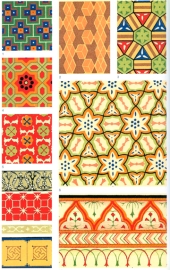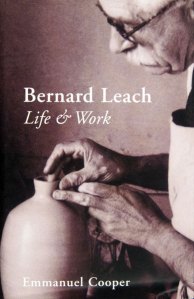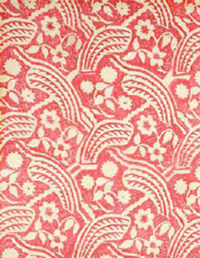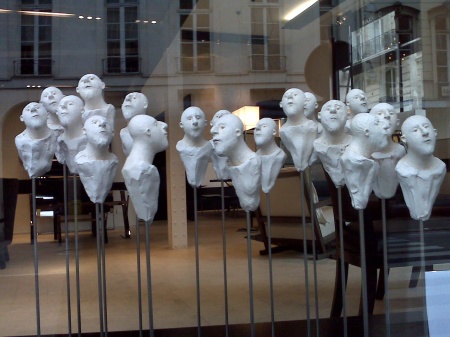Most every Venetian Red post cites a book or two related to the topic at hand. Occasionally we review books at length. Many readers have commented with appreciation, and we decided that more in this department just might be better. Today we introduce Venetian Red Bookshelf, a periodic round up of books, favorites from our bookshelves and studio worktables.
 Albrecht Dürer, Self-Portrait, 1500
Albrecht Dürer, Self-Portrait, 1500
In her beautiful book, A Face to the World, Laura Cumming writes engagingly about the art of the self-portrait. Cumming draws you into her subject with the mesmerizing self-portrait by Albrecht Dürer (1471-1528) on the cover and keeps your attention by her thoughtful inquiries into the intriguing art of the self portrait via literature, philosophy, history and biography. The book is thoroughly researched, very well-written, extremely entertaining and beautifully illustrated with self-portraits from Dürer to Warhol. —Christine Cariati.
The Grammar of Ornament, by Owen Jones. A classic in the annals of design; there isn’t much more to be said here. But if you do want want more, you might be interested in the VR post A Question of Ornament. —Liz Hager
 Necklace, Jaipur, mid-nineteenth century
Necklace, Jaipur, mid-nineteenth century
Maharaja: The Splendour of India’s Royal Courts, edited by Anna Jackson and Amin Jaffer, was published as a companion to the current exhibition at the Victoria & Albert Museum, London. It is a lushly illustrated book that explores both the reality and fantasy surrounding India’s maharajas, with knowledgeable essays about the splendid paintings, textiles, jewelry, metalwork and furniture of India’s rulers from the 18th century to 1947. —Christine Cariati.
 Yasuhiro Suzuki—Cabbage Bowls, paperclay. Each leaf “peels” off to become its own functional bowl.
Yasuhiro Suzuki—Cabbage Bowls, paperclay. Each leaf “peels” off to become its own functional bowl.
Designing Design, by Kenya Hara. “Creativity is to discover a question that has never been asked. If one brings up an idiosyncratic question, the answer he gives will necessarily be unique as well.” Quite possibly the most inspirational book in my collection. This book by Japanese designer and curator Kenya Hara is chock full of pearls of deep wisdom on design as a philosophy of life. In between them are loads of images of creative solutions masquerading as products, graphics, systems, food, art. Think different!—Liz Hager
 Gunta Stölzl, Untitled, watercolor and colored chalk, 1921
Gunta Stölzl, Untitled, watercolor and colored chalk, 1921
Finally, a book that does justice to the contributions of the women of the Bauhaus movement, Ulrike Müller’s Bauhaus Women: Art, Handicraft, Design. Müller explores the life and art of the more recognized artists—weavers Anni Albers and Gunta Stölzl and metalworker Marianne Brandt—along with those whose work has been largely neglected, such as Gertrud Grunow, Ida Kerkovius, Benite Otte, Otti Berger, Ilse Fehling, Lou Scheper-Berkenkamp, et al. An excellent companion book is Gunta Stolzl: Bauhaus Master, recently published by the Museum of Modern Art in conjunction with their current exhibition, Bauhaus 1919-1933: Workshops for Modernity. —Christine Cariati.
Color: A Natural History of the Palette, by Victoria Findlay. In this part travelogue, part historical investigation Findlay traverses the globe in search of the often-surprising origin of natural pigments and dyes. Maybe you know that the “Ultramarine Blue” pigment was originally ground up lapis lazuli mined only in Afghanistan. (Michaelangelo is reputed to have held up a painting waiting for the stuff.) But did you know that the royal purple of the ancient world was made from the mucous gland of a sea snail (murex brandaris) or that Napoleon might have died from the arsenic in the green paint of his wallpaper on St. Helena? This book is a welcomed addition to any painter’s bookshelf. — Liz Hager
 Winifred Gill, Sketch of dancers, 1916
Winifred Gill, Sketch of dancers, 1916
Beyond Bloomsbury: Designs of the Omega Workshops 1913-19 was published to coincide with the exhibition of the same name at The Courtauld Gallery, London, which was held from June-September of this year. It is a beautiful book which, in addition to showing finished pieces, also includes many preliminary sketches for designs. For those of you in the San Francisco Bay Area, a related exhibition, A Room of Their Own: The Bloomsbury Artists in American Collections is currently at Mills College, Oakland until December 13, 2009. —Christine Cariati.
William Kentridge: Five Themes (catalog). William Kentridge is quite possibly the most talented artist working today. He’s a man of enormous creative capacity, who has profound things to say. If you missed the “Five Themes” retrospective in San Francisco and absolutely cannot get to NY MOMA this spring to see it, this catalog may be a painful indication of what you have missed. If you did see the show, the catalog will forever be a reminder of his particular genius. For more on the exhibition, see Last Days in San Francisco. —Liz Hager
Wallpaper: The Ultimate Guide by Charlotte Abrahams is a rather giddy celebration of wallpaper, tracing its history, designers, manufacturers and uses—and has many full-page reproductions of contemporary designs. A good companion to the 2005 second edition of The Papered Wall: The History, Patterns and Techniques of Wallpaper edited by Leslie Hoskins which takes a comprehensive and detailed historical approach to the subject. —Christine Cariati.
.jpg) Francisco Goya, from Los Caprichos, 1797-98, etching.
Francisco Goya, from Los Caprichos, 1797-98, etching.
The Demon & The Angel, by Edward Hirsch. Mark Rothko once observed that “All art deals with intimations of mortality.” Drawing predominantly on Frederico Garcia Lorca’s concept of the the duende (literally translated as “demon,” although the Spanish word implies inspiration in the face of tragedy, even death), poet Edward Hirsch delves enthusiastically into the source of artistic inspiration, which he believes emanates from both the “irrational splendors” of the duende and the inspirational angel (divine, though not religious, notion). Not limiting himself to poets, Hirsch also invokes Jackson Pollock, Robert Motherwell, Jimi Hendrix, Portuguese Fado. It’s heady to the point of obscurity in parts, but still worth the read for the thought-provoking nature of many of its insights. —Liz Hager
 Trade textile, block-printed and dyed cotton, Gujarat, c.1340-80
Trade textile, block-printed and dyed cotton, Gujarat, c.1340-80
Each of the four small hard-cover books included in V&A Pattern: Slipcased Set #1 (William Morris, Digital Pioneers, Indian Florals and The Fifties) comes with a CD which designers can use to rework and redraw the patterns for their own use (after obtaining a license from the V&A.) The V&A plans to issue three more sets in this series, the next, V&A Pattern Slipcase #2, will be out in early 2010 and will include Owen Jones, Novelty Patterns, Secret Garden and Kimono. Not nearly as much fun as spending endless hours rifling through the V&A textile collections in person, but the books are lovely, with an interesting and somewhat unusual assortment of patterns that provide an inspiring glimpse into the vast resources in the V&A’s textile collection. —Christine Cariati.
 Edvard Munch, The Scream, 1893, oil, tempera & pastel on cardboard.
Edvard Munch, The Scream, 1893, oil, tempera & pastel on cardboard.
Art & Fear: Observations on the Perils (and Rewards) of Artmaking, by David Bayles & Ted Orland. What working artist facing the inspirational void hasn’t felt a fevered terror similar to the one depicted in Munch’s celebrated painting? This booklet of 188 pages is both a pragmatic reminder of reality—i.e. “Making art now means working in the face of uncertainty; it means living with doubt and contradiction, doing something no one much cares whether you do, and for which there may be neither audience nor reward”— and soothing medicinal balm—i.e. “The best you can do is make art you care about—and lot’s of it! The rest is largely a matter of perseverance.” No artist should be without this. —Liz Hager

































